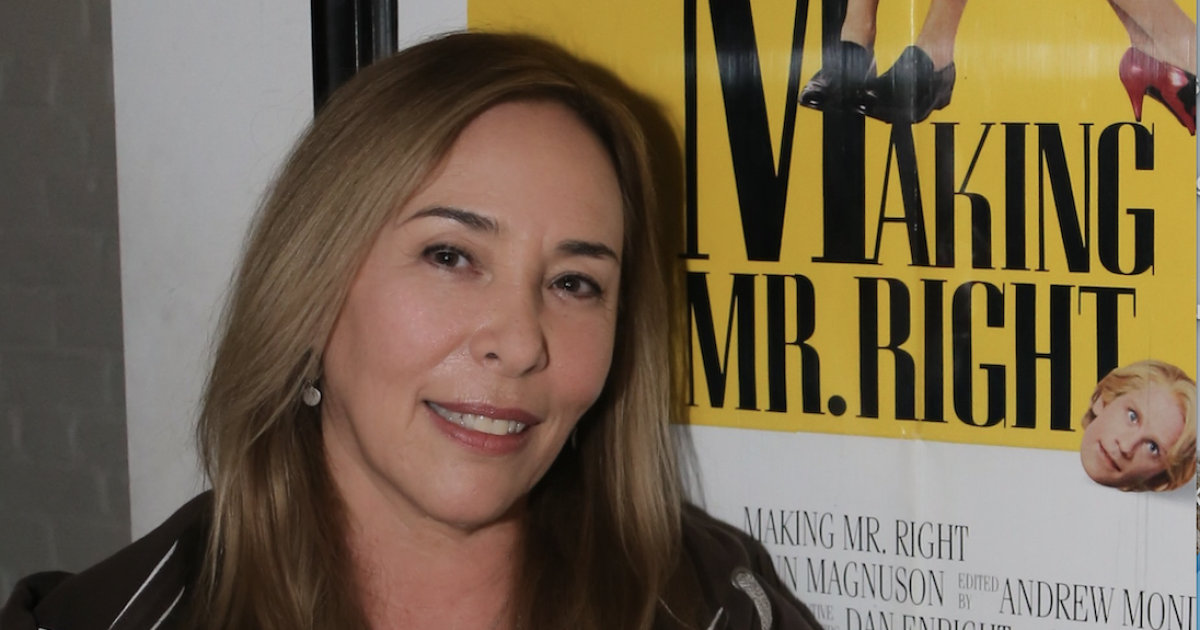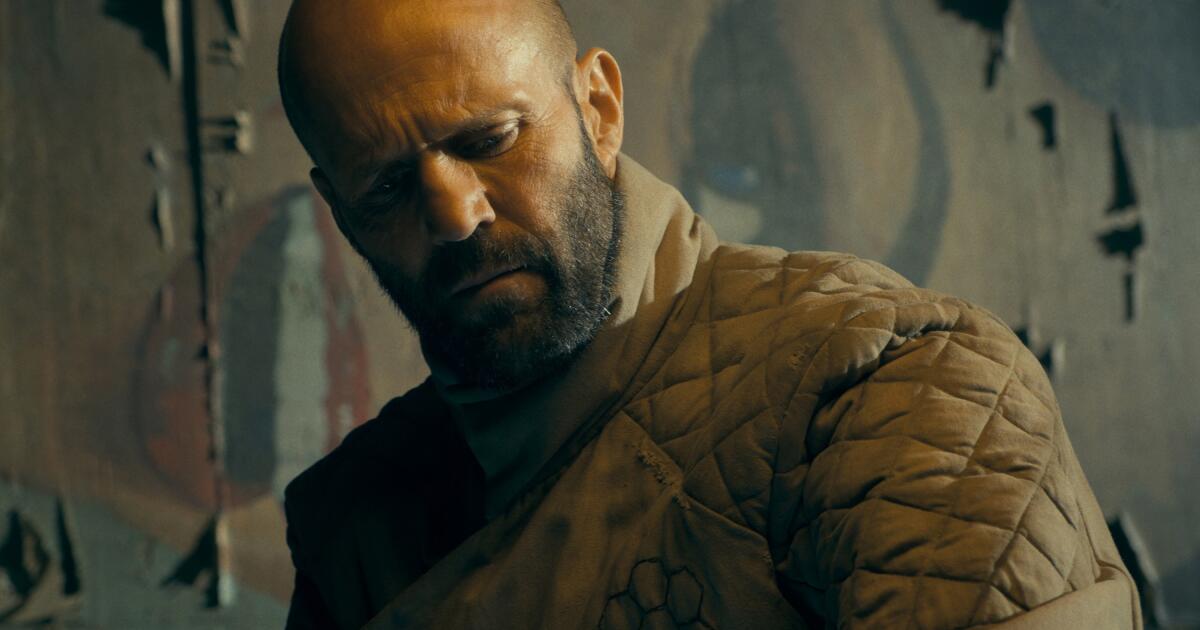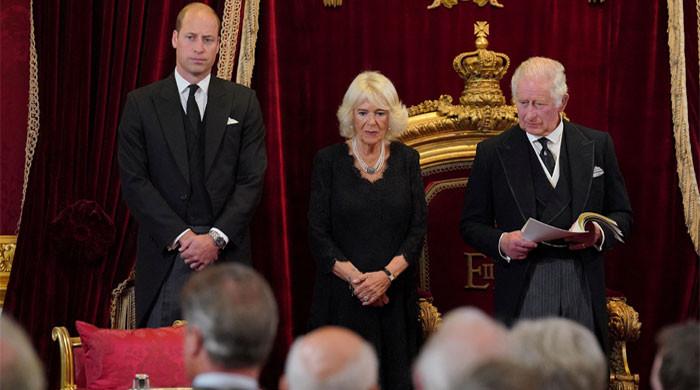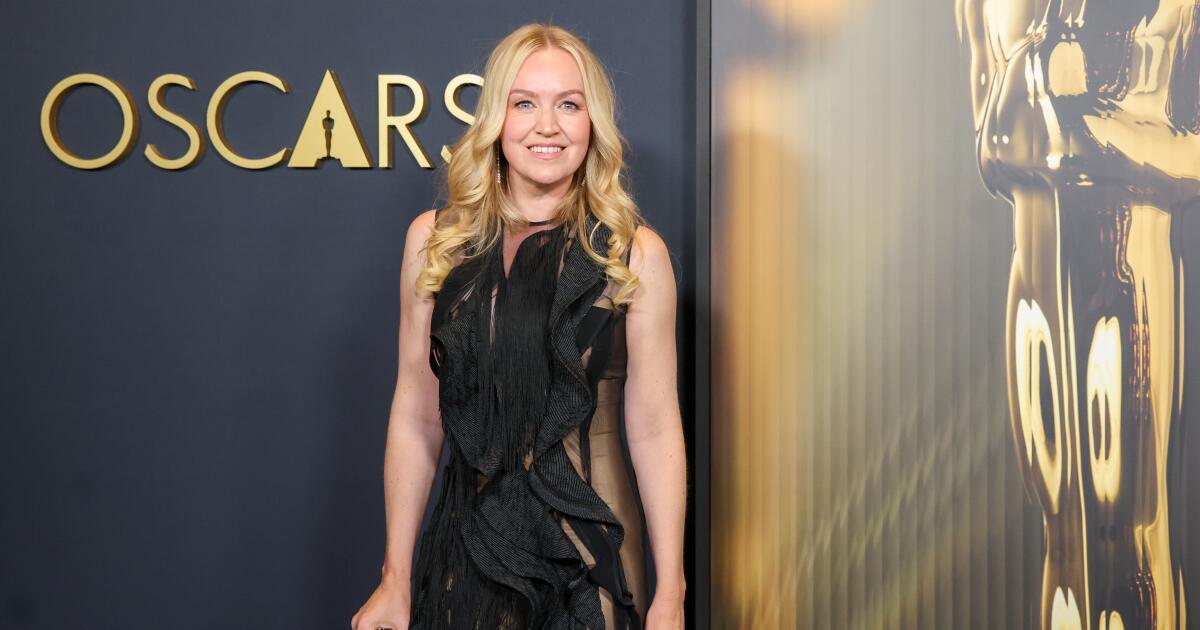On the shelf
Desperately Seeking Something: A Memoir About Movies, Mothers, and Material Girls
By Susan Seidelman
St. Martin's Press: 368 pages, $30
If you buy books linked to on our site, The Times may earn a commission from bookstore.orgwhose fees support independent bookstores.
Susan Seidelman is an advocate of what she calls disorderly fighting. The film and television director, whose film “Desperately Seeking Susan” is the great feminist comedy of the '80s and is enshrined in the National Film Registry, has always trusted her instincts to get her to where she wants to be. . Which is not to say that Seidelman came to her career by whim or good luck. As a woman, she had little room for error. She took hard work for granted, but also the ability for what she calls “aesthetic joy,” to find the path to something great.
That approach has led to an idiosyncratic career of bold exploration, both inside and outside the Hollywood system. In 1982, Seidelman ushered in the independent film counterrevolution with her debut, “Smithereens,” and she later became one of the few directors to work consistently in Hollywood. “I'm not goal-oriented, but I'm very determined,” Seidelman says from her home in upstate New York.
Such was the focus of Seidelman's first book, “Desperately Searching for Something: A Memoir about Movies, Mothers, and Material Girls,” which will be published June 18. The prospect of establishing the details of her public and private self had been a notion only in theory. , something to do much later in life. As it turned out, “later” was 2020, when the pandemic shut down Seidelman's ability to work on projects and allowed him to write.
The COVID-19 pandemic was a test for her; Two weeks after her closings with her partner, Jonathan Brett, Seidelman received news that actor Mark Blum, who appeared in “Desperately Seeking Susan,” had died from complications of the virus.
“In our film community, Mark was one of the first victims of COVID, and that affected me a lot,” he says. “I also turned 70 and became very aware of my mortality.” After a lifetime of moving forward, Seidelman decided it was a good time to take stock.
“The prospect of writing a book terrified me because I'm a visual person,” she says. “I can write dialogues, but a book? Then the pandemic happened, I had time to think and things little by little began to take shape.”
Seidelman relied on his iPhone to organize his thoughts: “I discovered my Notes app and started writing stories that way.” He had 100 stories in a week. A few months later, she had 1,000. “The process became something like editing a movie,” he says. “I downloaded all the notes and shuffled them to see where they took me.”
In other words, the fight is complicated, but it's nothing new for her. In the Reagan era, Seidelman was the antithesis of what Hollywood film directors were supposed to be like: the bearded, baseball-cap-wearing movie nerd with a hunger for high-concept movies. “I'm less than 5 feet tall,” he says. “If he walked into a studio executive's office, he would be incredulous. So I had to overcome that because no director looked like me.”
“Desperately Seeking Something” traces the arc of American cinema over the past 45 years through Seidelman's singular career. When Seidelman, then a recent graduate of New York University film school, raised the money to finance “Smithereens,” she had no ambition other than to direct. But the film's vitality resonated with audiences and it became an artistic success.
“Smithereens” also screened at the Cannes Film Festival, being the first independent film to compete there. Thus, Seidelman unknowingly launched the New York independent film movement that would give us Jim Jarmusch, Spike Lee and Bette Gordon.
Seidelman had no such background; When she was a young moviegoer, she remembers seeing only one movie in a theater directed by a woman: Elaine May's “A New Leaf.” That was in Philadelphia in 1969, when, in her senior year of high school, her guidance counselor asked Seidelman to take an aptitude test to determine her career prospects. “My test result said I should be a librarian,” writes Ella Seidelman. “At first I was horrified. …What I didn't realize was that the aptitude test was right. A librarian loves stories, so do I.”
After “Smithereens,” Seidelman was given the keys to directing a Hollywood film. “Desperately Seeking Susan,” in which a bored New Jersey housewife (Rosanna Arquette) suffers amnesia and assumes the identity of an East Village actress (Madonna), was written, produced and directed entirely by women, something unheard of. at that moment. The comedy, which fortuitously coincided with the rise of Madonna's pop career, became a box office hit and a cultural phenomenon.

“Desperately Seeking Susan,” from 1985, starring Rosanna Arquette, left, and Madonna, was written, produced and directed entirely by women, something unheard of at the time.
(Sunset Boulevard/Corbis via Getty Images)
“'Desperately Seeking Susan' would have been a very different movie if it didn't have female producers and writers,” says Seidelman. “I identified with both characters, so making that movie felt organic to me.”
Buoyed by her critical and commercial success, Seidelman signed a four-picture deal with Orion Pictures, another landmark achievement for a female director. She was also present at the dawn of HBO's renaissance, directing the pilot for “Sex and the City” as well as several anthology series for the cable channel and Showtime, when Hollywood had taken baby steps in hiring female directors.
As a college student, Seidelman had no big plans for directing. Then, during her junior year as a fashion design student at Drexel University, she took a film appreciation class and was blown away. Bergman, Antonioni, Varda – it was a crash course in the great European auteurs, an introduction to how to create characters with psychological depth, how to play with narrative flow – the infinite set of tools of cinematic storytelling.
From the beginning, Seidelman wanted to make films with strong female protagonists improvising their way toward a sense of self, an identity that lasts, a counterintuitive notion in a business whose fossil fuel was male testosterone. Undaunted, Seidelman continued to explore themes of female desire and power. 1987's “Making Mr. Right,” a social satire about a romance between a public relations executive (Ann Magnuson) and a robotic simulacrum of a brilliant scientist (John Malkovich), was a sly inversion of films about “building a girl.” perfect” like those of John Hughes. '”Weird science.” Still, Seidelman endured blows from male critics who opposed “the idea of a woman abandoning human men to find satisfaction with a programmable 'sex robot'.”
“Most of the leading critics were men,” Seidelman writes. “Intentionally or not, there was a sexist bias.” “Making Mr. Right,” which lost money in its initial release, has since found its second revisionist air among younger audiences.
Seidelman's new memoir is a guide to being true to your art without losing your integrity, even within Hollywood's rigid winner-take-all culture.
“Writing the book was a terrifying time, when the world seemed like a science fiction movie,” he says. “But having gained some wisdom with age, I felt like I had finally managed to distance myself enough from my life without having to deal with all the emotional baggage of youth, like when you're 37 and you're reading a bad review of your movie and It crushes you.”












